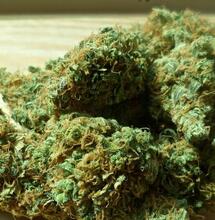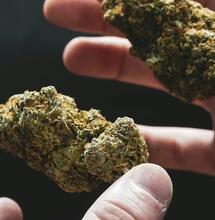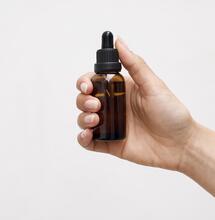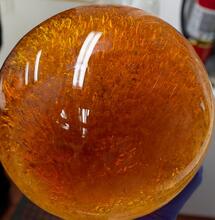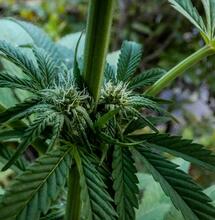Everything You Need to Know About Cannabinoids
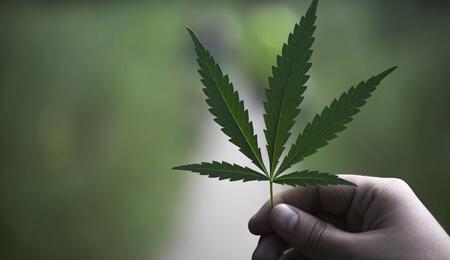
Everyone has heard about THC and CBD, the two major cannabinoids found and extracted from cannabis plants. While THC is the primary mind-altering cannabinoid found in marijuana, CBD is non-psychedelic and it’s more commonly found in hemp cultivars. Both have various medical uses. However, there are hundreds more compounds in cannabis, including many other cannabinoids that are different from THC and CBD. In this article, we go through a more expanded list of major and minor cannabinoids, and their effects in recreational and medical use.
Cannabis or marijuana is not all about CBD or THC. That’s just the most famous pair, and then comes a bunch of other cannabinoids that cannabis research is learning about something new every day. Those other cannabinoids are also regularly infused in various cannabis products. Either to reinforce the effect of the main cannabinoid, or as a sole extract for added therapeutic benefit, such as improved sleep, relaxation, stress relief, better immune system, and the list goes on.
All cannabinoids interact with the body’s endocannabinoid receptors when inhaled or ingested. The interaction would always differ depending on the type of cannabinoid. Some interactions are direct, and others happen via other supporting enzymes or molecules.
Below, let’s take a look at the list of the most commonly found cannabinoids in cannabis and the various health-related effects they produce for users.
List of Cannabinoids and Their Effects
Most of the focus in both cannabis research and industry products falls on six phytocannabinoids, and those are: THC, CBD, THCV, CBN, CBC, and CBG. Phytocannabinoid is just another word for cannabinoids that occur naturally in the cannabis plants, as cannabinoids can also be derived in synthetic ways. In the list below, read more about each of the main six cannabinoids, as well as their precursor acid forms.
THC
Why marijuana is so famous, and why was it prohibited for such a long time? Most of the answer comes down to the one major cannabinoid that’s responsible for making users high, and you’re no stranger to it. THC is the primary mind-altering substance in marijuana, and it also has plenty of other medical uses. Most notably, it’s used to alleviate pain, for stress relief, for better sleep, and yeah, to make you giggle even when you look at the most boring or cringe meme on the internet. The abbreviation THC stands for tetrahydrocannabinol.
CBD
CBD is for Cannabidiol. It’s the other major cannabinoid found in all types of cannabis plants, with hemp varieties being way more abundant in CBD than other types. Unlike its counterpart THC, CBD does not cause high. However, recent research suggests that when CBD is taken in higher doses together with THC, there is a pharmacokinetic reaction that can bump up the feeling of intoxication. As a cannabinoid, CBD seems like it’s living its golden days. In the beginning of its medical uses it was given mostly for epilepsy, and today it’s taken for just about anything.
THCA
All cannabinoids have their precursors in acidic forms, typically found in the fresh flower and then in the dried bud. THCA or tetrahydrocannabinolic acid becomes THC only when lighting up the buds. It’s also non-intoxicating until that point. If you take fresh juice from cannabis, the drink would be rich in THCA instead of THC. You might feel a slight buzz, but it won’t be the same as actually smoking weed. Like other cannabinoids, THCA has multiple medical benefits. It’s a compound efficient for inflammation and pain, and it’s one of the cannabinoids increasingly used to treat arthritis and seizures.
CBDA
Just like THC, CBD also has its precursor in the form of an acid compound. CBDA or cannabidiolic acid again requires decarboxylation to convert into CBD. While both CBD and CBDA are similar, they differ in the way they interact in the body. For example, CBDA does not directly bind to endocannabinoid receptors. Instead it locks onto specific enzymes. CBDA is eyed in medical research for treating inflammation, anxiety, seizures and some types of cancer.

THCV
It’s more famously known as “diet weed.” Because it’s considered that this cannabinoid can help you burn calories faster and lose body weight. THCV or tetrahydrocannabivarin is mostly found in cannabis products alongside THC. Isolated and purified forms of this cannabinoid are more rare and researchers need to do further studies. However, it’s definitely a less intoxicating compound than THC, and largely a cannabinoid linked to reduced appetite. Scientists have found that THCV can suppress appetite stimulation in the body. In addition, it’s known that it also decreases glucose intolerance in obese. This puts the THCV cannabinoid in a wide range of possible medical uses, including fatty liver disease, acne, and even psychosis treatment.
CBN
CBN or Cannabinol was for a long time billed as the new melatonin. And so much is true. This minor cannabinoid is a noted sleep and sedation medicine. CBN reacts with the same receptors in the body as CBD, but they are two different chemicals. CBN is technically a degraded form of THC. Meaning, when a cannabis flower is harvested past its prime, growers get weed that has decreased amounts of THC, and increased CBN. The most powerful sedating effect with CBN could be achieved when combined with THC.
CBC
Cannabichromene or CBC is another cannabinoid with extremely promising therapeutic potential. Research has shown that CBC has strong anti-inflammatory properties, and can be used in treating chronic pains and cancer. One study has found that CBC in combo with CBD might be particularly effective for head and neck cancers. In addition, CBC might affect the brain and nerves as it has a potentially positive effect on neural stem progenitor cells, but more research is needed. CBC is found in almost all CBD-rich strains, including famous ones like Charlotte’s Web, Purple Tsunami, and Valentine X.
CBG
CBG or Cannabigerol is famously known as the “mother of all cannabinoids.” That’s because all other cannabinoids are derived from cannabigerolic acid (CBGA), including CBG. A non-psychoactive cannabinoid, CBG can help control inflammation in the body as well as it facilitates anxiety and stress relief. Recent research has further shown that CBG can also be good for memory. Isolated forms of CBG are expensive, but CBG is typically available in broad-spectrum CBD oils, which contain every cannabinoid you need for your health. There are several strains that are specifically cultivated for their higher levels of CBG, including Jack Frost CBG, Super Glue CBG and White CBG. From the more popular recreational strains, Do-Si-Dos is the one with more significant CBG content of 1%.
CBGA
CBGA is produced in the plant’s trichomes and is a precursor to all the other cannabinoids. What does that mean? The acidic form of CBG is what also ultimately gives THC and CBD. It’s the foundational compound that converts into other major and minor cannabinoids as the cannabis flower forms, grows and undergoes various chemical reactions, thus producing THCA, CBDA, and CBGA, among other cannabinoids. CBGA appears to work particularly well for reducing oxidative stress, which is important for maintaining balanced metabolism and good cardiovascular health. The antioxidant effects of CBGA have demonstrated greater antioxidant activity than CBG or even Vitamin E.
CBNA
Cannabinolic acid or the pre-form of CBN is one of the most delicate cannabinoid molecules as it breaks down quickly into CBN. This makes research into CBNA more scarce and many of the unique properties of CBNA remain unknown. But it’s widely considered that CBNA has fairly similar properties as CBN. Even though it's an ‘aged’ form of THC, CBNA is non-intoxicating. CBN is further noted for its anti-inflammatory effect and the potential to treat conditions like glaucoma. In combination with CBD, CBN and CBNA can work as a powerful pain medicine.
How Many More Cannabinoids Are in Cannabis?
Those are only a few of the many known cannabinoids extracted from cannabis cultivars. More than 150 other cannabinoid compounds have been identified by scientists among over 600 total compounds that include terpenes and flavonoids.
The big six phytocannabinoids all have sister cannabinoids, clustered by scientists into separate groups. For example, CBC leads the subclass of Cannabichromenes, thus there’s also Cannabichromevarin (CBCV), Cannabichromenic acid (CBCA) and Cannabichromevarinic acid (CBCVA). Or, besides CBD there are also other Cannbidiols, such as Cannabidiol monomethylether (CBDM) or Cannabidiorcol (CBD-C1). It’s a huge list. You might hear more often for any of these other minor cannabinoids in the future as research into cannabinoids continues.
How Cannabinoids Interact in the Body?
All cannabinoids, major and minor, engage with the human body’s endocannabinoid system. This system consists of myriads of molecules and receptors that work together to keep the body balanced. The endocannabinoid system has functions related to temperature control, pain management, learning and memory, inflammatory and immune response, regulating appetite, and more.
Our body contains two types of cannabinoid receptors, and those are CB1 and CB2. CB1 receptors are spread in the brain and nerves, while CB2 receptors are scattered in the immune system and some of the other organs. THC, CBD, CBC, or any other cannabinoid can engage with either CB1 or CB2 or accompanying particles of the endocannabinoid system. In plain words, those interactions modulate the different body functions, and facilitate the therapeutic effects of cannabis.
Also read on Soft Secrets:
- Is It Possible to Extract Cannabinoids from Smoke?


